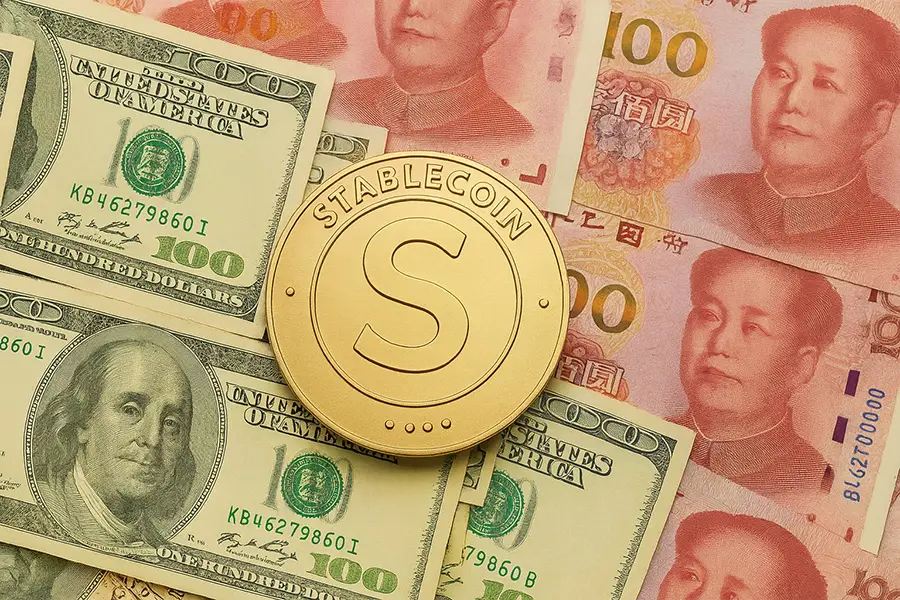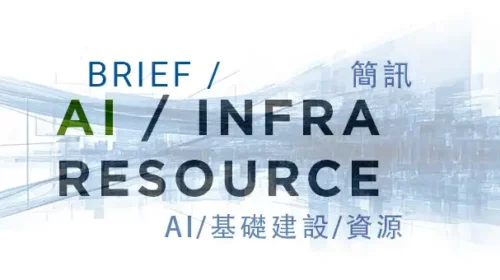China plays catch-up to U.S. in stablecoin rivalry

As the U.S. moves swiftly to set the rules for on-chain finance, an increasingly anxious China is seeking entry to the virtual currency world via Hong Kong
By Lee Shih Ta
Stablecoins have played an increasingly pivotal role in the virtual asset market in recent years due to their blockchain-based payment and settlement capabilities. While the U.S., under President Donald Trump, is actively advancing stablecoin legislation to establish regulatory dominance, China has taken a more indirect approach due to its own ban on cryptocurrencies on the Mainland. It has responded through institutional reforms in Hong Kong and deployments by Mainland-backed brokerages — extending the global currency-clearing battleground into the digital asset space.
In April 2025, the U.S. House Financial Services Committee passed the Stable Act, requiring stablecoin issuers to hold banking licenses and submit to federal oversight. Meanwhile, the more stringent Genius Act was recently approved by the Senate. The U.S. strategy is clear: incorporate U.S. dollar-pegged stablecoins like USDC and USDT into its formal financial system to reinforce its dominance in on-chain finance. Driven by this momentum, Circle (CRCL.US), the issuer of USDC, has seen its stock surge 3.8 times since its early June listing, strengthening market expectations that the dollar will ultimately rule supreme in blockchain-based settlements.
Stablecoins are cryptocurrencies pegged to fiat currencies, most commonly the U.S. dollar, and are favored in scenarios like DeFi, cross-border payments, and tokenized assets due to their price stability and redeemability — features not shared by highly volatile cryptocurrencies like bitcoin or ethereum.
The significance of U.S. stablecoin legislation goes beyond consumer protection and anti-money laundering. It aims to integrate stablecoins into the official financial clearing system, enabling cross-border payments and asset settlements without reliance on the widely used SWIFT clearing system or commercial bank networks. Once achieved, this would embed the dollar into every major blockchain ecosystem worldwide.
90% of stablecoins pegged to the U.S. dollar
The global value of circulating stablecoins surpassed $140 billion by the end of 2024, with over 90% of those pegged to the dollar, according to data provider CoinMetrics. Even in decentralized Web3 ecosystems, the dollar maintains its influence through stablecoins.
This presents a serious challenge for China, which wants to enhance the global standing of its own currency, the yuan or renminbi (RMB). While Beijing bans cryptocurrency trading and mining domestically, it has aggressively promoted its central bank digital currency (e-CNY). Yet, e-CNY’s closed-loop design hinders its global adoption. Against this backdrop, Chinese state media have frequently criticized U.S. stablecoin legislation this year, warning of “digital dollar hegemony.”
But China hasn’t stopped with simple rhetoric. In June, Hong Kong – which is part of China but has its own separate financial system – passed its own stablecoin licensing regime, which will take effect on Aug. 1, marking China’s first tangible step into the global digital asset clearing framework.
At the same time, Guotai Junan International (1788.HK) became the first Mainland-backed brokerage approved to offer virtual asset trading and custody services in Hong Kong — a cautious but symbolic entry of Chinese capital into blockchain finance. While not directly issuing stablecoins yet, China’s regulatory framework in Hong Kong could pave the way for yuan-pegged stablecoins in the future.
Other major Chinese brokerages such as CSC Financial and Haitong International are also rumored to be exploring potential participation, building virtual asset platforms and risk control models. This two-pronged strategy — at the policy and commercial levels —suggests that China may be using Hong Kong as a testbed for yuan-based blockchain clearing systems.
Unlike the U.S. legislative model, Hong Kong uses an administrative guideline and licensing regime. Still, it offers a comprehensive framework on reserve backing, disclosure and transparency. And, crucially, it allows the issuance of stablecoins pegged to its own currency, the Hongo Kong dollar, and also the yuan — opening the door for more Chinese financial institutions to participate in cryptocurrency development.
For now, it remains unlikely that Mainland China will ease its restrictions on cryptocurrencies. Without a liberalized digital asset ecosystem, catching up to U.S. dollar-backed stablecoins will be a formidable task. However, further relaxation in Hong Kong or limited cross-border use cases are possible. As a controlled financial hub, Hong Kong may ultimately become China’s launchpad for developing yuan-based stablecoins — ensuring China and its currency won’t be absent from the coming competition for global clearing dominance.
Lee Shih Ta is an editor at Bamboo Works.
You can contact him at shihtalee@thebambooworks.com
To subscribe to Bamboo Works weekly free newsletter, click here





